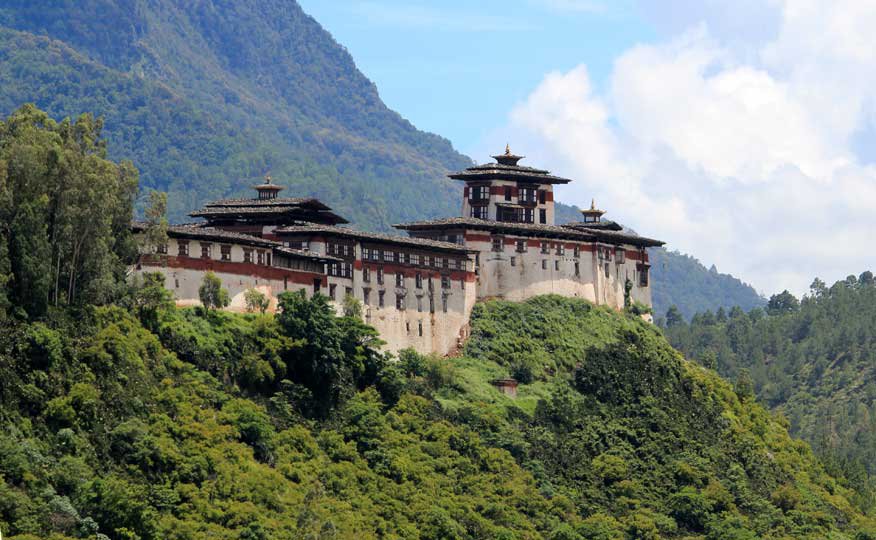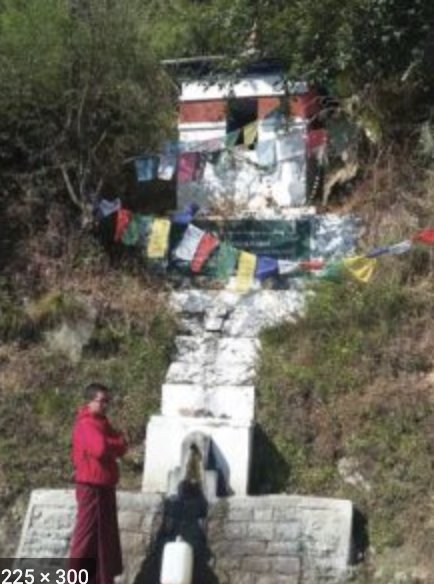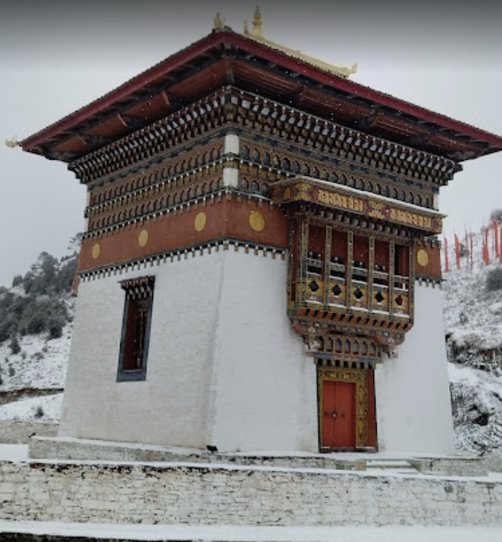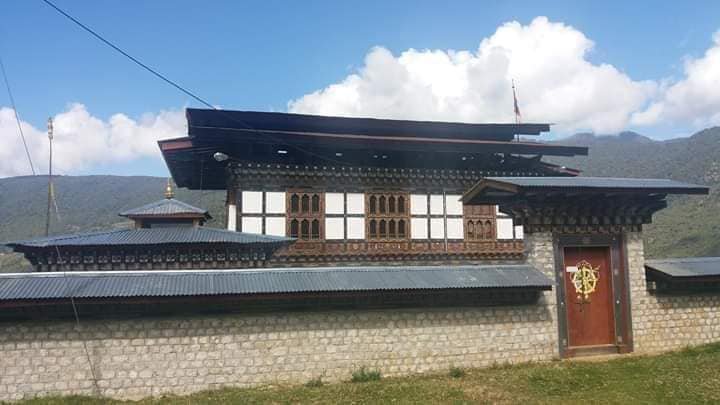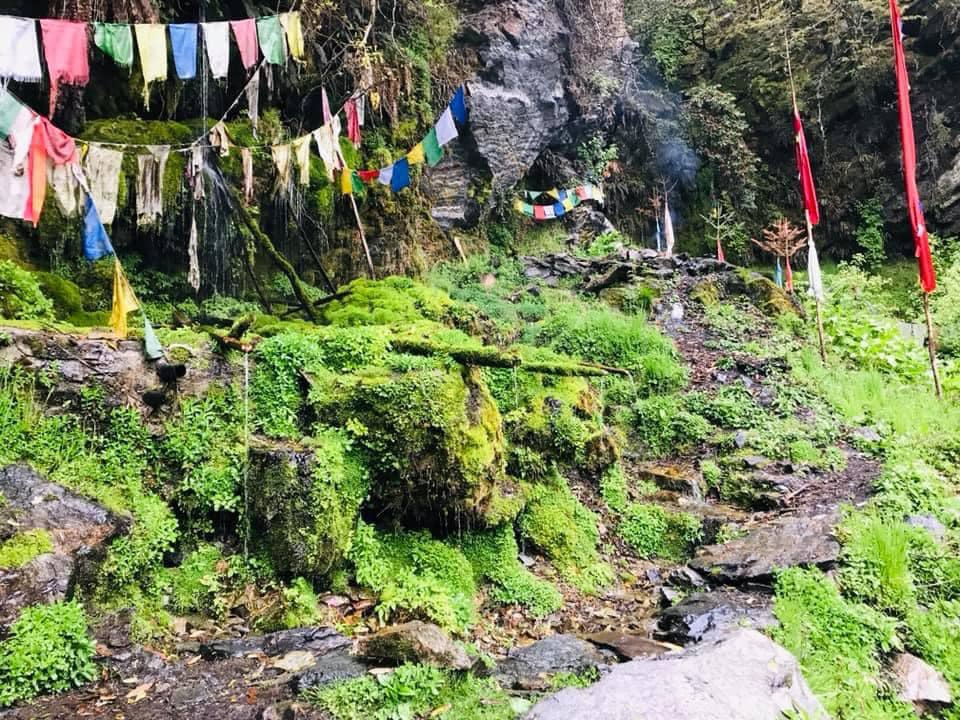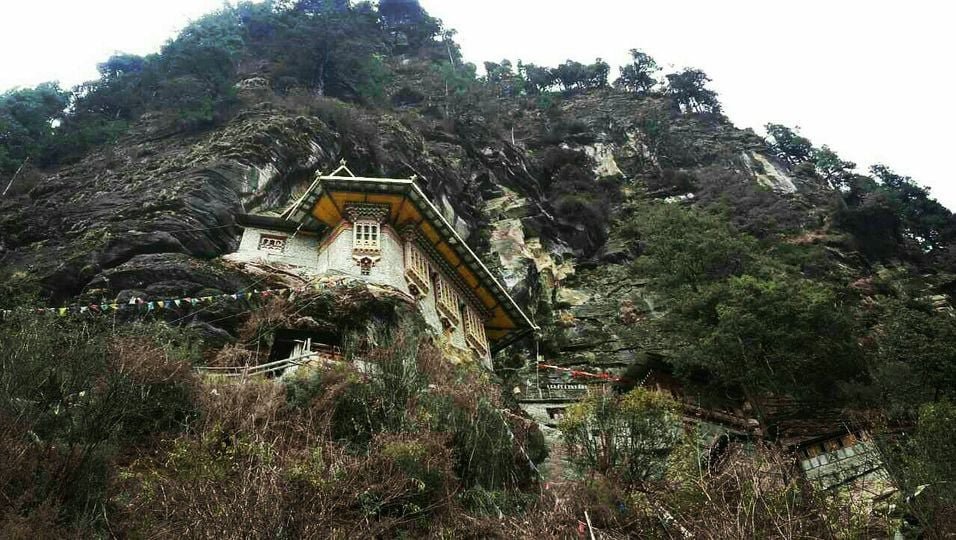Bay Yul Langdra Nye
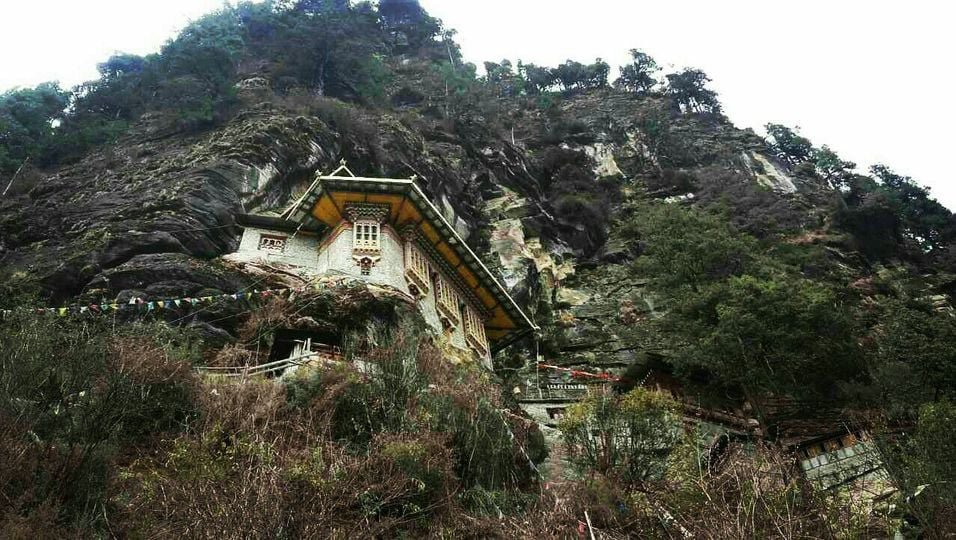
Bey Landra is one of the three holiest nay in Bhutan (the other two being Paro Taktsang and Senge Dzong . Bey Langdra is sacred to Guru Rinpoche, Gyalwa Longchenpa, and to Dorje Lingpa (a famous Terton) and has an important connection to Kyabje Chatral Rinpoche. According to sacred texts, Guru Rinpoche returned from Zangdokpalri for a seven-day sojourn in Bey Langdra. On His arrival, Terdak Langdrapa, a local diety, caused obstacles to the Guru. However, manifesting as Urgyen Dorje Gur, the Guru subdued the diety and appointed him as the protector of the treaure-teachings. It is said that Guru Rinpoche has hidden approximately 60 terma here.
Kunkhyen Longchen Rabjampa visited Bey Langdra in 1356 followed by his son Tersay Drakpo Ozer. Later in Shar Kunzaling, the seat of Kunkhen Longchen Rabjampa, Terdak Langdrakpa instructed Terton Dorje Lingpa to visit Bey Langdra. After visiting the place and staying there for seven days, Dorje Lingpa was disappointed after finding no spiritual indications. However, when just about to leave, a Dakini appeared before Him and instructed Him to look at the cliff. On the cliff, he saw Guru Rinpoche as an eight-year-old boy emanating from a rainbow. The Guru thus instructed him: “My son, do not leave. You are the destined treasure revealer.” The Terton then entered into a retreat. On the 10th day of the eighth month in retreat, the Guru again appeared to Him. The Guru instructed Him that, if one merely sees Bey Langdra, one will be freed from samsara. If one visits it, all defilements will be purified. If one practices Dharma there, one will find spiritual fulfillment and realize all the Yidam practices. If one makes offerings here, all aspirations for all lifetimes will be fulfilled. However, despite Guru Rinpoche and many great Tertons like Pema Lingpa and Sherab Mebar consecrating Bey Langdra, it remained hidden even to Bhutanese for many centuries.
In 1986, Lungten Tulku went to Yolmo in Nepal and approached Kyabje Chatral Rinpoche about Bey Langdra. In 1988, Kyabje Chatral Rinpoche visited Bhutan and petitioned His Majesty about the spiritual discovery. Chatral Rinpoche then stated that, although there are many sacred spiritual places in the world, the discovery of Bey Langdra is very significant. First, it has a very sacred legacy, and second, it has not been defiled over time. Chatral Rinpoche also remarked that all Bhutanese who could now visit the site had more merit than those who had passed away.
On Chatral Rinpoche’s instructions, a retreat centre named Drubdra Ozer Samtenling was constructed at the foot of the valley. In 2000, Chatral Rinpoche appointed Lungten Tulku as the destined Lama to construct a lhakhang in Bey Langdra. With limited resources and experience, Tulku constructed a small lhakhang there measuring 25 feet in length. The lhakhang housed a 10-foot tall statue of Urgyen Dorje Gur made in Punakha and sponsored by HRH Ashi Deki Yangzom and two six-foot tall statues of Khandro Yeshe Tshogyal and Khandro Mandarawa.
It was the desire to visit Bey Langdra that prompted Bob and Honora to arrange this pilgrimage to Bhutan. Along with visiting Paro Taktsang, it is the centerpiece of this trip. Few Westerners have even heard about Bey Langdra, much less visited it. Truly it is an unspoiled hidden country (bey yul). Oct 20. We will drive back to Wangdi Phodrang, enroute visiting the Dechencholing Temple built by Jigme Kundrol, one of the four heart-sons of Kunkhyen Jigme Ling. From there, we will visit the Dargey Gompa also built by Jigme Kundrol. We will stay in a hotel in Wangdi Phodrang.
Cypress tree at beyul langdrak
It’s said that every cypress tree in Bhutan tells a tale. And indeed each one has a story. It just takes going around asking about the tree to unveil it. Besides being the national tree of Bhutan the cypress is associated with diverse myths and beliefs. Every grain of the cypress tree seen majestically towering over the dzongs, temples and stupas is imbued with intricate stories. Such stories are the greatest surprise surrounding the cypress.
The two formidable trees at Baylangdra in Wangdue and at Kurjey in Bumthang are no exception to this. Their origin can be traced to the walking stick of the great Indian saint who visited Bhutan in 8th century. When such trees are planted, they’re done to serve as the ‘standing proof’ of the flourishing dharma. Often it is said that the trees will grow only if there is a prophecy that Buddhism will exist without waning. The trees cater to the locality as symbol of worship and blessings.
The giant cypress tree growing near the Kurjey Lhakahng is believed to have been planted upside down to the incredulity of science, and if the deformation still seen among the branches is anything to believe. The guarding of the tree is also believed to have been entrusted to Shelging Karpo – the local deity subdued by Guru Rinpoche. Hence, for anything to do with trees, special permission needs to be sought from the clay idol of the deity in the sanctum by rolling a pair of dice. To film the tree, our team had to roll the dice several times until we received the auspicious number.
If you need validation of how fiercely the tree is protected by the local deity, you only need to listen to Lam Wangchuk of Kurjey Lhakhang. He narrates an incident where the preceding Lam after performing special ‘soelkha’ (offering) instructed a monk to cut a small branch to be used as ‘Zung’ (inner relics) for newly built stupa. As the monk started sawing the branch, from beneath the bark, instead of the tree sap, red blood oozed out. The monk survived for another three years after this incident. Lam Wangchuk calculated that the tree is 1201 years old and every attempt by monks to propagate the tree has been futile.
The cones of holy cypress trees are hung to protect from misfortunes
The cypress story of Baylangdra is equally fascinating and surprising. Proof that the tree grew from Guru’s walking stick is prominent and visible from one vantage point which gives you a clear view of the fork at the top which represents the point for resting the palm against the walking stick. The tree is also believed to house relics and confer blessings equivalent to five monasteries.
Every year the tree is revered on the 15th day of 8th month of the Bhutanese calendar, a day known as ‘Tsenden tsechu’. Come the day, all 35 households of Bay chiwog congregate in the small flat area around the tree and circumambulate the prayer-wheels surrounding the majestic tree. During the day-long ritual, the community can relish and relax in the tsechu atmosphere the entire day. The sponsor for the festival is rotated among community members on an annual basis.
From the porridge served at day-break, the repast continues far past dawn. However, respecting the sanctity of the day, no meat of any kind is included in the menu, according to Daw Penjor, resident of Bay Village.
Many visitors from faraway places visit holy cypress trees such as those at Bay Langra and at Kurjey Lakhang. But while the holy trees are a boon to the visitors, the visitors are a bane to the trees. They collect the bark, branches, twigs, leaves, cones and all parts of the tree to be used as materials for blessings
